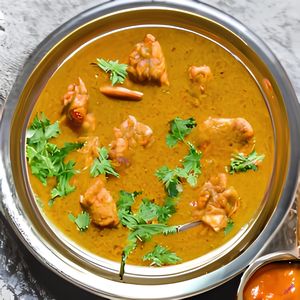History of Indian Cuisine
Indian cuisine has a long and fascinating history that dates back to ancient times. The earliest evidence of food in India dates back to the Indus Valley Civilization, which existed around 2500 BCE. The people of this civilization relied on a variety of crops, including rice, wheat, and barley, and they used spices such as cumin, coriander, and ginger to flavor their food.
Over time, Indian cuisine was influenced by various cultures and traditions, including those of the Mughals, the British, and the Portuguese. These influences brought new ingredients and cooking techniques to India, leading to the development of new dishes and flavors.
One of the most significant influences on Indian cuisine was the introduction of Buddhism in the 3rd century BCE. Buddhist monks were vegetarians, and this led to the development of a rich tradition of vegetarian cuisine in India. Today, India is known as a vegetarian-friendly country, with many delicious vegetarian dishes available at restaurants and street stalls.
Diversity of Indian Cuisine
India is a diverse country, with a variety of cultures, traditions, and cuisines. Each region of India has its own unique culinary traditions and flavors, and Indian cuisine is characterized by its use of spices and herbs to create complex and delicious flavors.
North Indian cuisine is known for its rich, creamy curries, which are made with a base of onions, tomatoes, and yogurt, and flavored with spices such as cumin, coriander, and turmeric. Popular dishes include chicken tikka masala, butter chicken, and paneer makhani.
South Indian cuisine, on the other hand, is characterized by its use of rice, lentils, and coconut. Dishes such as dosa, idli, and vada are popular in the south, as are spicy curries made with coconut milk and seafood.
In the east, Bengali cuisine is known for its use of mustard oil and seafood, while in the west, Gujarati cuisine is characterized by its sweet and sour flavors and use of vegetables and lentils.
Unique Characteristics of Indian Cuisine
One of the unique characteristics of Indian cuisine is its use of spices and herbs to create complex and delicious flavors. Some of the most commonly used spices in Indian cooking include cumin, coriander, turmeric, cardamom, and cinnamon. These spices are often used in combination to create unique flavor profiles.
Another characteristic of Indian cuisine is its use of a tandoor oven to cook meats and breads. A tandoor is a cylindrical clay oven that is heated with charcoal or wood, and it is used to cook foods at high temperatures. Tandoori chicken, naan bread, and kebabs are all popular dishes that are cooked in a tandoor oven.
Indian cuisine also places a strong emphasis on vegetarianism, with many delicious vegetarian dishes available at restaurants and street stalls. This is due to the influence of Buddhism and other religious traditions, which promote vegetarianism as a way of life.
Indian cuisine is also characterized by its use of a variety of cooking techniques. Many Indian dishes are cooked using a method called “tempering,” which involves frying spices in oil or ghee to release their flavors and aromas. This technique is often used to create the base for curries and other dishes.
Another common cooking technique in Indian cuisine is “dum cooking,” which involves sealing a pot with dough and slow-cooking the food inside. This technique is often used for biryanis and other rice dishes, as well as for slow-cooking meats and vegetables.
Indian cuisine also includes a wide variety of breads, including naan, roti, and paratha. These breads are often cooked in a tandoor oven or on a griddle, and they are served alongside curries and other dishes.
Desserts are an important part of Indian cuisine, and there are many sweet treats to choose from. Some popular desserts include gulab jamun (deep-fried dough balls in a sweet syrup), rasgulla (soft, spongy cheese balls in a sweet syrup), and kulfi (a type of Indian ice cream).
In addition to its delicious flavors and unique characteristics, Indian cuisine also has many health benefits. Many Indian dishes are made with nutritious ingredients like lentils, vegetables, and whole grains, and the use of spices and herbs has been linked to a variety of health benefits, including reducing inflammation and aiding digestion.
Here are ten popular Indian main dishes that are loved by people all over the world:
These dishes are just a small sample of the wide variety of main dishes that Indian cuisine has to offer. Whether you prefer spicy curries, creamy sauces, or vegetarian options, there is something for everyone in Indian food.

